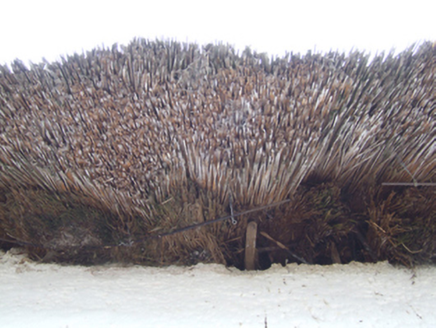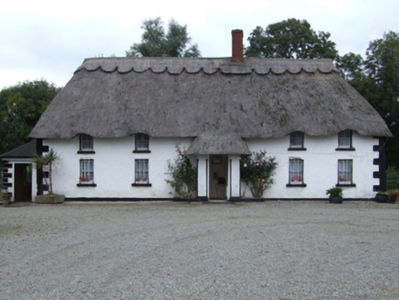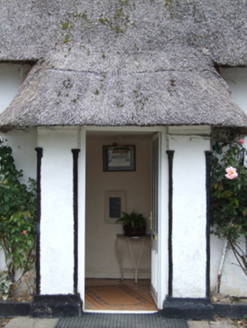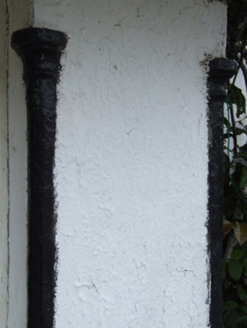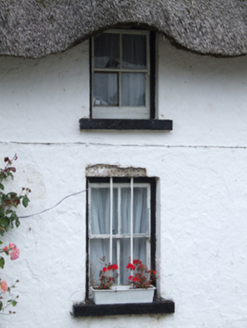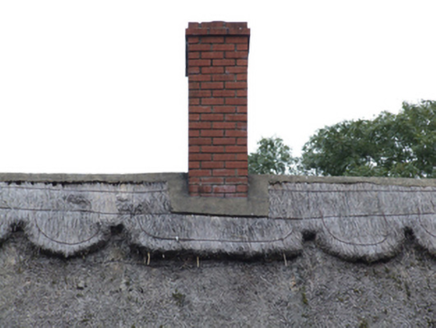Survey Data
Reg No
15703244
Rating
Regional
Categories of Special Interest
Architectural, Social
Original Use
Farm house
In Use As
Farm house
Date
1700 - 1840
Coordinates
301037, 132211
Date Recorded
29/09/2007
Date Updated
--/--/--
Description
Detached five-bay single-storey lobby entry thatched farmhouse with half-dormer attic, extant 1840, on a T-shaped plan centred on single-bay single-storey gabled windbreak. "Improved", 1901, producing present composition. Occupied, 1911. Reroofed, ----. Replacement hipped water reed thatch roof extending into hipped water reed thatch roof (windbreak) with exposed steel stretchers to decorative raised ridge having blind scallops, red brick Running bond off-central chimney stack having stepped capping supporting terracotta pot, and blind stretchers to eaves having blind scallops. Limewashed lime rendered battered walls on rendered plinth with rendered quoins to corners. Square-headed central door opening with concealed dressings having engaged colonette-detailed reveals framing replacement glazed uPVC panelled door. Square-headed window openings with concrete or rendered sills, and concealed dressings including timber lintels framing two-over-two timber sash windows having part exposed sash boxes with one-over-one (ground floor) or three-over-six (half-dormer attic) timber sash windows to rear (north) elevation. Interior including (ground floor): central lobby with "spy hole". Set in landscaped grounds.
Appraisal
A farmhouse identified as an integral component of the vernacular heritage of County Wexford by such attributes as the rectilinear lobby entry plan form centred on a Classically-detailed windbreak; the construction in unrefined local materials displaying a battered silhouette with sections of "daub" or mud suggested by an entry in the "House and Building Return" Form of the National Census (NA 1901; NA 1911); the disproportionate bias of solid to void in the massing compounded by the diminishing in scale of the openings on each floor producing a graduated visual impression; and the high pitched roof latterly showing a non-indigenous Turkish water reed thatch finish: meanwhile, such traits as the symmetrical or near-symmetrical pattern of the openings convey aspirations to "gentrified" architecture (cf. ----). Having been well maintained, the elementary form and massing survive intact together with substantial quantities of the original fabric, both to the exterior and to the interior, thus upholding the character or integrity of the composition. Furthermore, adjacent limewashed outbuildings (extant 1840) continue to contribute positively to the group and setting values of a neat self-contained ensemble having long-standing connections with the Bolger family (NA 1901; NA 1911).
